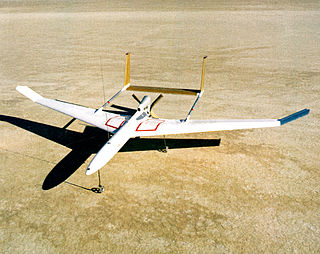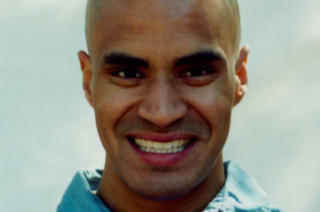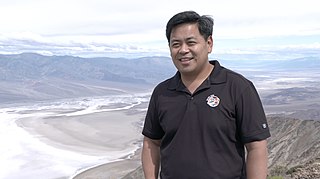
The Jet Propulsion Laboratory (JPL) is a federally funded research and development center (FFRDC) in La Cañada Flintridge, California, Crescenta Valley, United States. Founded in 1936 by California Institute of Technology (Caltech) researchers, the laboratory is now owned and sponsored by NASA and administered and managed by Caltech.

The Gossamer Albatross is a human-powered aircraft built by American aeronautical engineer Dr Paul B MacCready's company AeroVironment. On June 12, 1979, it completed a successful crossing of the English Channel to win the second Kremer prize worth £100,000.

The Robert J. Collier Trophy is awarded annually for the greatest achievement in aeronautics or astronautics in America, with respect to improving the performance, efficiency, and safety of air or space vehicles, the value of which has been thoroughly demonstrated by actual use during the preceding year.

The MacCready Gossamer Condor was the first human-powered aircraft capable of controlled and sustained flight; as such, it won the Kremer prize in 1977. Its design was led by Paul MacCready of AeroVironment, Inc.
The Kremer prizes are a series of monetary awards, established in 1959 by the industrialist Henry Kremer.

Paul Beattie MacCready Jr. was an American aeronautical engineer. He was the founder of AeroVironment and the designer of the human-powered aircraft that won the first Kremer prize. He devoted his life to developing more efficient transportation vehicles that could "do more with less".

AeroVironment, Inc. is an American defense contractor headquartered in Arlington, Virginia, that designs and manufactures unmanned aerial vehicles (UAVs). Paul B. MacCready Jr., a designer of human-powered aircraft, founded the company in 1971. The company is best known for its lightweight human-powered and solar-powered vehicles. The company is the US military's top supplier of small drones —notably the Raven, Switchblade, Wasp and Puma models.

Charles Elachi is a Lebanese-American professor (emeritus) of electrical engineering and planetary science at the California Institute of Technology (Caltech). From 2001 to 2016 he was the 8th director of the Jet Propulsion Laboratory and vice president of Caltech.
The Monarch B was a human-powered aircraft, designed and built by graduates and undergraduates of the Massachusetts Institute of Technology, and won the £20,000 first prize for the Kremer World Speed Competition. It is a successor to the Monarch A HPA which preceded it.

The Gossamer Penguin was a solar-powered experimental aircraft created by Paul MacCready's AeroVironment. MacCready, whose Gossamer Condor in 1977 won the Kremer prize for human-powered flight, told reporters in June, 1980 that "The first solar-powered flight ever made took place on May 18." The testing ground was at Minter Field outside of Shafter, California.

The PSU Zephyrus is a human-powered aircraft being constructed by the Penn State AERSP 404H team. It is a composite material, single-seat, single propeller, high-wing airplane. The Zephyrus is designed to compete in the Kremer prize sport competition.

A human-powered aircraft (HPA) is an aircraft belonging to the class of vehicles known as human-powered transport.

The Southampton University Man Powered Aircraft on 9 November 1961 became the first human-powered aeroplane to make an officially authenticated take-off and flight. It was designed and built by Southampton university students between 1960 and 1961 for an attempt at the Kremer prize, but it was never able to complete the 'figure-of-eight' course specified to claim the prize money.
The HPA Toucan is a British two-seat human-powered aircraft built and flown by members of the Hertfordshire Pedal Aeronauts and was the first two-person human-powered aircraft to fly.

A Mars aircraft is a vehicle capable of sustaining powered flight in the atmosphere of Mars. So far, the Mars helicopter Ingenuity is the only aircraft ever to fly on Mars, completing 72 successful flights covering 17.242 km (10.714 mi) in 2 hours, 8 minutes and 48 seconds of flight time. Ingenuity operated on Mars for 1042 sols, until it was retired following rotor blade damage.
The University of Maryland Gamera II is an improved human-powered helicopter designed to win the US$250,000 Sikorsky Prize.

The White Dwarf is a human-powered dirigible built in 1984 that set several world records.

Kobie Boykins is a senior mechanical engineer at NASA's Jet Propulsion Laboratory in Pasadena, California. In 2013, he was awarded the NASA Exceptional Achievement Medal. He designed the solar array systems for the Mars exploration rovers Spirit and Opportunity, and designed the actuators on the Mars rover Curiosity. He is currently the supervisor of the mobility and remote sensing teams for Curiosity. In 2003, he was part of NASA's M-Team, which lectured nationally to students regarding careers in science, technology, engineering, and mathematics. He lectures internationally for National Geographic regarding exploration on Mars.

Allen "Al" Chen is an American aerospace engineer. He was the Entry, Descent, and Landing (EDL) Operations Lead on the Mars Science Laboratory mission and the EDL Lead for the Mars 2020 mission.

Timothy Canham is an American software engineer. He works at the Jet Propulsion Laboratory (JPL), where he is the operations lead and former software lead for the Mars helicopter Ingenuity. He resides in Santa Clarita, California.
















